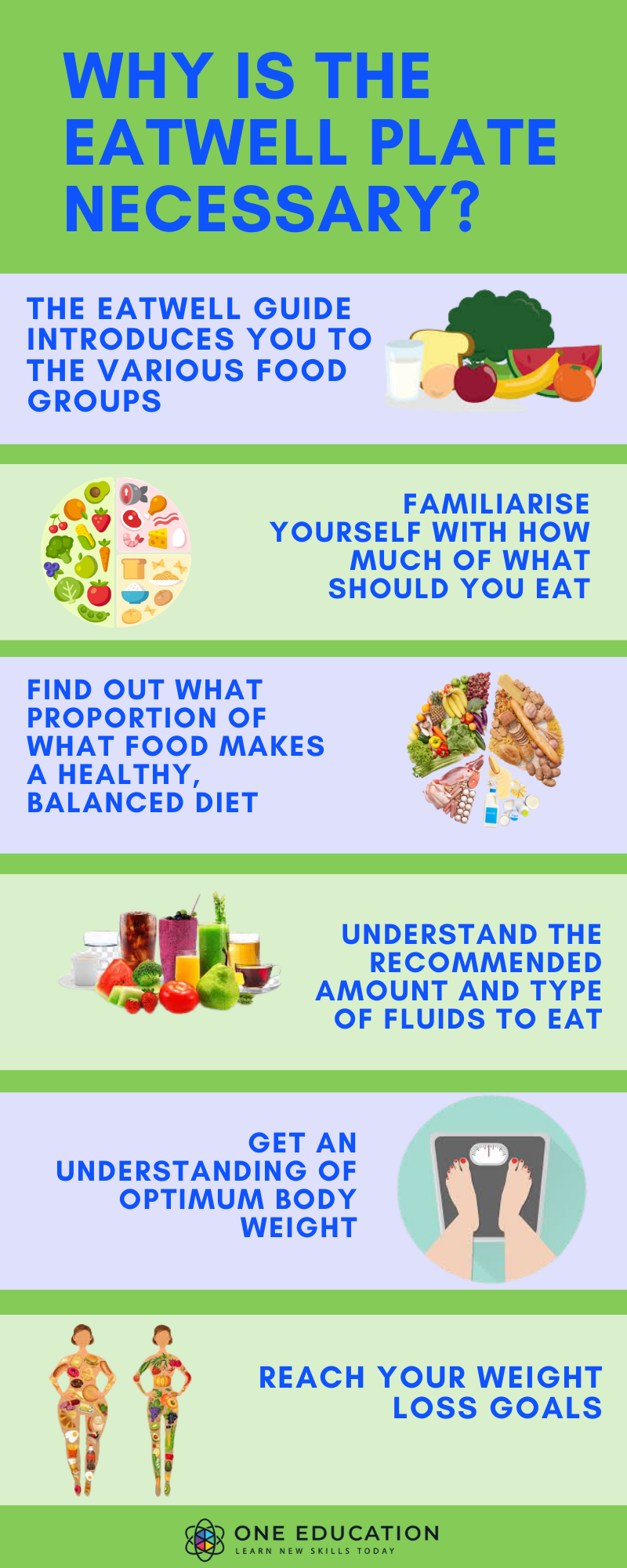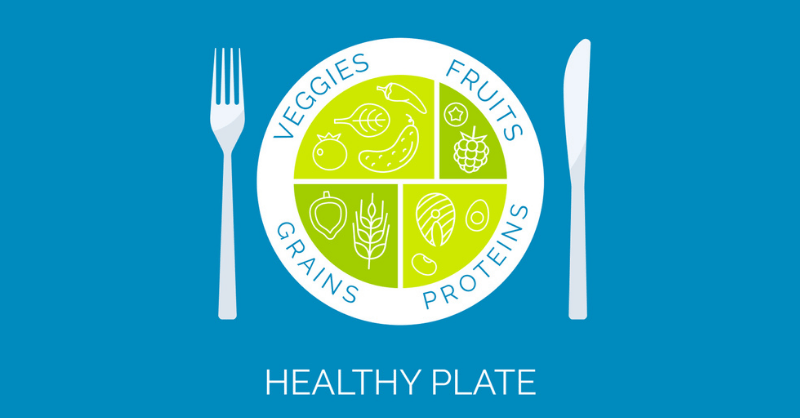Our physical, as well as mental wellbeing, has a lot to do with what we eat. Imagine our body as a machine. Not just any machine, a very sophisticated one. The body acts differently when we intake different types of food. The Eatwell plate helps people figure out the correct proportions of different types of food.
The food we eat acts as the fuel for our body. Every food we take enters our stomach and goes through chemical reactions. This reaction produces the energy we need to operate. Different kinds of food create different reactions in our body. Some foods support us to regulate soundly. On the contrary, some foods may cause discomforts.
A fact about food intake is that it’s all about the right proportions. Even a disproportionate amount of healthy and unhealthy food can cause our body to act unusually. So it’s a tightrope and there are several facets to it. Mainly a healthy diet depends on several aspects of your food intake. These are :
- The type of food you are eating
- The amount of energy your body can create from it
- The way you look to spend the produced energy
- The way your body reacts to it
To most people, it’s not something everyone may find easy to keep track of. Most people are somewhat likely to keep any trace of their eating habits at all. This is where the Eatwell plate comes into play. Recently the Eatwell plate has been renamed as Eatwell guide. So sometimes the Eatwell plate may also be referred to as the Eatwell guide. But they refer to the same thing.
What is the Eatwell plate?
Eatwell guide is an illustration that shows some of the main food groups and their recommended proportions for a healthy diet. The purpose of the Eatwell plate is to help people get a quick glimpse of the insights on their daily food intake.
The Eatwell plate was first officially issued by the government of the United Kingdom. The Department advised the idea of health. The idea is not as new. A similar thing used to exist known as The Balance of Good Health. Most other countries have their versions of a similar item.
Recently as of 2007, the government has renamed the Eatwell guide to Eatwell plate. The name was adjusted so that the name better reflects its purpose. There is no difference between the Eatwell guide and the Eatwell plate, and they refer to the same thing. So in this article, the terms Eatwell plate and Eatwell guide have been used interchangeably.
Why is the Eatwell plate necessary?
The Eatwell plate serves an essential purpose. It provides people with a reliable scientific evidence-based guideline to maintain a healthy lifestyle. Here we have pointed out the core points for you:

- The Eatwell Guide introduces us to the various food groups
- Please familiarise yourself with how much of what should we eat
- Find out what proportion of what food makes a healthy, balanced diet
- Understand the recommended amount and type of fluids are included
- Get an understanding of maintaining an optimum body weight
- Reaching weight loss goals
In general, the Eatwell plate has been devised to help people make better choices for themselves.
People may find it hard to figure out how to interpret the information dropped in the Eatwell guide. So here are the details to help you fully grasp the elements represented in the Eatwell plate:
- The Eatwell plate doest represent a particular meal. Instead, it refers to a specific time scale particular week or over ten days. This way, everyone gets his cheat days. But try not to get into cheating that often.
- The Eatwell plate classifies each food group and shows you a percentage of how much you should eat of each food group.
- The guide also recommends the right options to choose from to design your meal plan in a healthy way.
The leading group of foods that have been recommended in the guide are:
- Whole grain and other starchy sources of carbohydrates
- To make people eat a sufficient amount of green fruits and vegetables
- Ensure a perfect balance in the intake of animal protein such as meat, fish, eggs and so on
- Consume the ideal amount of proteins from vegetable sources such as beans, seeds and other forms of vegan protein
- Eat a controlled amount of foods that contain fats
- Regulate the amount of consumption of sugary drinks, unhealthy fats and salts
- Consume ample dairy portions
To better understand the principle food ingredients, we will now discuss the principal food groups and discuss various food sections included in the Eatwell guide for your better understanding.

Food is any substance consumed by all living organisms to provide energy to their body. The energy is used to carry out various physical and physiological activities. The whole living world has to give this energy daily. So the importance of food to the living is beyond recognition.
Nutrients are the main ingredients in the food that is used by living beings to produce energy. Dietary intake of the nutrient is vital for living to survive, grow, and reproduce.
Nutrients are broadly classified into two categories.
- Macronutrients and
- Micronutrients.
Macronutrients are the nutrients that provide our body with regulatory energy. So we need them in larger quantities to fulfil our energy needs. These are fat, protein and carbohydrates.
Micronutrients are what we need in smaller quantities such as vitamins and minerals.
Nutrition is the branch of science that interprets the nutrients. So the study of food is instrumental for proper maintenance, growth, reproduction, health and disease of an organism.
Studying all the different foods we eat, it has been divided into seven groups. Each group consists of similar food elements. To clarify, this has been done to make people aware of nutrition science is quickly consuming as little time as possible.
Among various types of food groups, we need to incorporate into our diets the following seven, particularly.
1. Carbohydrates
Carbohydrates also terms’ carbs’ provide the primary sources of energy to the body. Our body gets carbs from sugars, starches and fibres found in fruits, grains, vegetables and milk products. Some popular carbohydrates are bread, beans, milk, popcorn, potatoes, cookies, spaghetti.
2. Fats
Fat refers to an ester of fatty acids or a mixture of such compounds. They are found in nature and occur in living beings. Apart from that, fat is an essential nutrient for our bodies.
Essential vitamins and minerals from food are absorptions by fat. So fats boost the absorption capacity of our body. Fat also helps protect our internal organs. We get fats from fish, meat, eggs and the oils we consume.
3. Dietary Fiber
Dietary fibres come alongside edible parts of plants based carbohydrates. Although they are resistant to digestion and absorption, they assist in specific bio and physiological functions. They help in digestion by complete or partial fermentation in the large intestine. Polysaccharides, oligosaccharides, lignin, and associated plant substances are recognised as dietary fibre. They are found in fruits, vegetables, cereals, oatmeal and other foods.


![]() 22 minutes
22 minutes


![]() 22 minutes
22 minutes